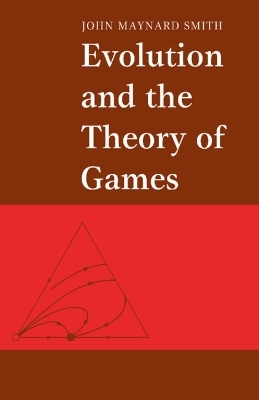
Evolution and the Theory of Games
Seiten
1982
Cambridge University Press (Verlag)
978-0-521-28884-2 (ISBN)
Cambridge University Press (Verlag)
978-0-521-28884-2 (ISBN)
In this 1982 book, the theory of games is modified so that it can be applied to evolving populations. Containing a full account of the theory, it leads to testable predictions about the evolution of behaviour, of sex and genetic systems, and of growth and life history patterns.
In this 1982 book, the theory of games, first developed to analyse economic behaviour, is modified so that it can be applied to evolving populations. John Maynard Smith's concept of an evolutionarily stable strategy is relevant whenever the best thing for an animal or plant to do depends on what others are doing. The theory leads to testable predictions about the evolution of behaviour, of sex and genetic systems, and of growth and life history patterns. This book contains a full account of the theory, and of the data relevant to it. The account is aimed at senior undergraduate and graduate students, teachers and research workers in animal behaviour, population genetics and evolutionary biology. The book will also be of interest to mathematicians and game theorists; the mathematics has been largely confined to appendixes so that the main text may be easily followed by biologists.
In this 1982 book, the theory of games, first developed to analyse economic behaviour, is modified so that it can be applied to evolving populations. John Maynard Smith's concept of an evolutionarily stable strategy is relevant whenever the best thing for an animal or plant to do depends on what others are doing. The theory leads to testable predictions about the evolution of behaviour, of sex and genetic systems, and of growth and life history patterns. This book contains a full account of the theory, and of the data relevant to it. The account is aimed at senior undergraduate and graduate students, teachers and research workers in animal behaviour, population genetics and evolutionary biology. The book will also be of interest to mathematicians and game theorists; the mathematics has been largely confined to appendixes so that the main text may be easily followed by biologists.
1. Introduction; 2. The basic model; 3. The war of attrition; 4. Games with genetic models; 5. Learning the ESS; 6. Mixed strategies-I. A classification of mechanisms; 7. Mixed strategies-II. Examples; 8. Asymmetric games-I. Ownership; 9. Asymmetric games-II. A classification, and some illustrative examples; 10. Asymmetric games-III. Sex and generation games; 11. Life history strategies and the size game; 12. Honesty, bargaining and commitment; 13. The evolution of cooperation; 14. Postscript; Appendices.
| Erscheint lt. Verlag | 21.10.1982 |
|---|---|
| Zusatzinfo | Worked examples or Exercises |
| Verlagsort | Cambridge |
| Sprache | englisch |
| Maße | 144 x 215 mm |
| Gewicht | 330 g |
| Themenwelt | Naturwissenschaften ► Biologie ► Evolution |
| ISBN-10 | 0-521-28884-3 / 0521288843 |
| ISBN-13 | 978-0-521-28884-2 / 9780521288842 |
| Zustand | Neuware |
| Haben Sie eine Frage zum Produkt? |
Mehr entdecken
aus dem Bereich
aus dem Bereich
Buch | Hardcover (2012)
Westermann Schulbuchverlag
CHF 44,90
Schulbuch Klassen 7/8 (G9)
Buch | Hardcover (2015)
Klett (Verlag)
CHF 29,90
Buch | Softcover (2004)
Cornelsen Verlag
CHF 23,90


